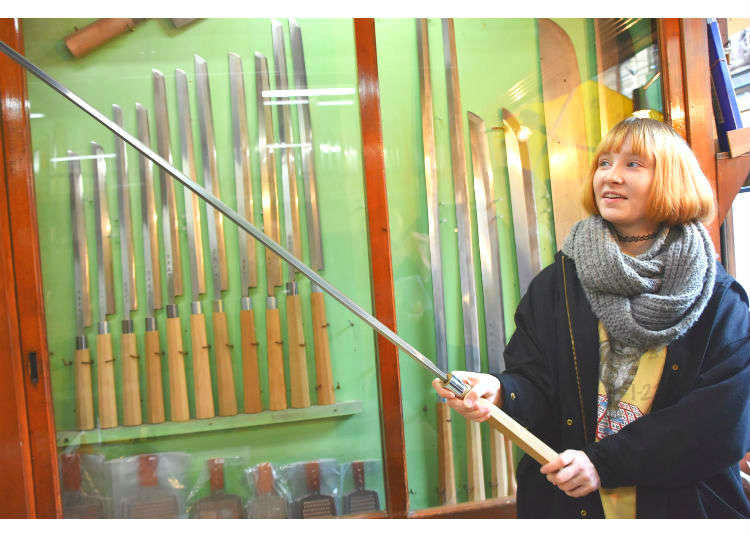
Located between Ginza and the Sumida River, Tsukiji is one of the most well-known areas for tourists as well as locals in Tokyo. Although Tsukiji is famous for its delicious fresh seafood, it also holds notable Japanese knife shops that support many of the stores in the area!
Azuma Minamoto-no Masahisa, a shop specializing in a diverse range of knives, is now in its fifth generation of service, continuing a tradition established over 145 years ago. But what makes Japanese knives and Azuma Minamoto-no Masahisa different from the rest?
About Azuma Minamoto-no Masahisa
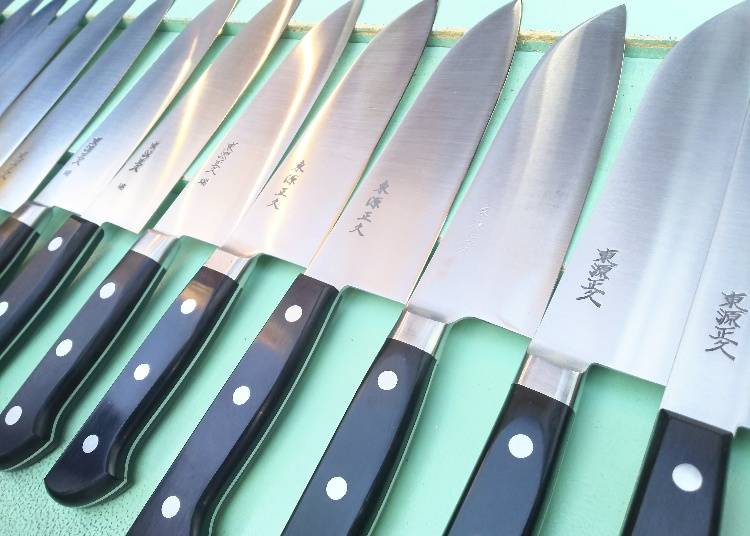
Founded in 1872, Azuma Minamoto-no Masahisa was originally based in a fish market in Nihonbashi and was relocated to Tsukiji along with most other shops from the market after the Great Kanto Earthquake of 1923.
Since its relocation, it has been servicing many businesses around it and catering to countless knife enthusiasts! Originally specializing in “wa-bocho” (Japanese-style knives), one of the knife makers went to Europe to learn the ways of “yo-bocho” (western-style knives).
You can now see these two styles of knives at their storefront. In the cases to the left, you will find the wa-bocho, and to the right, you will find the yo-bocho. The most distinct differences between the two are easy to spot: Japanese-style knives usually have light-colored, straight, rounded wooden handles, versus the western-style knives which are generally dark brown or black and feature a slight curve at the end of the handle.
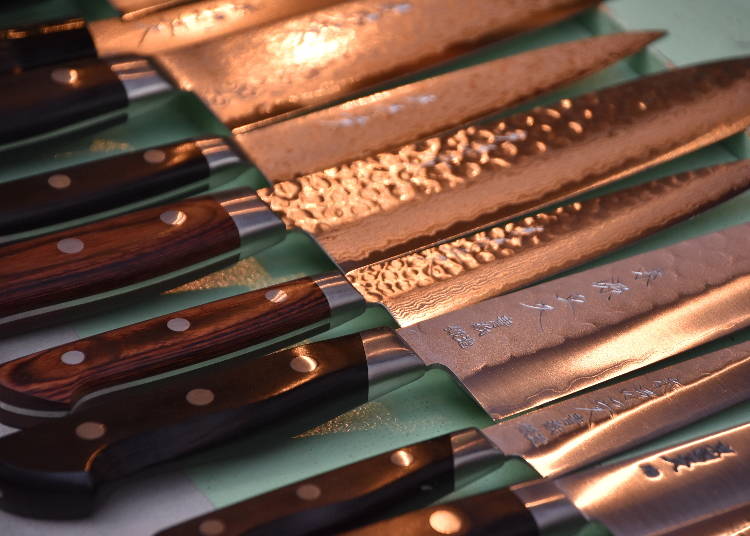
These unique and eye-catching knives look as if they were made to have these beautiful designs on them, but they are actually naturally-made patterns formed during the production process! These knives are created by using layer after layer of material, which can make these shapes on the knife’s blade, Azuma Minamoto-no Masahisa explains.
Although most knives are now made by machine, Azuma Minamoto-no Masahisa is still continuing their tradition by making knives by hand, one by one. Some of their special knives may even take up to a year to make due to the difficult process!
A vast selection of only the best
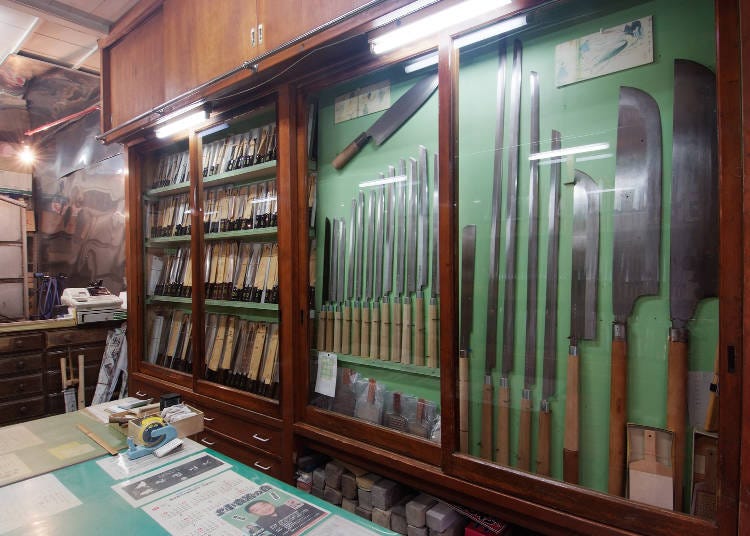
Because of the location, many of the knives being sold are for slicing and cleaning fish. However, there are countless more kinds than just these!
There are numerous shapes and sizes of knives being sold at Azuma Minamoto-no Masahisa, some of them rather rare and unique pieces!
One of these specialty knives created by this shop would be the gigantic maguro bocho, most likely to only be seen in Japan!
The one-of-a-kind Maguro Bocho
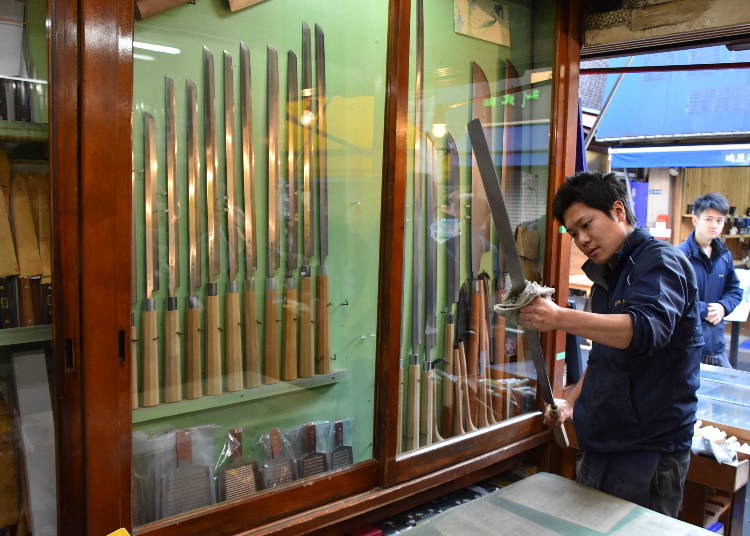
A “maguro bocho” is a knife used exclusively for cutting tuna and requires two people to handle it due to its length! Because this tuna cutting knife is so long, it’s actually quite flexible.
To cut a tuna, normally one person will hold the handle and another will hold the blade (wrapped with a cloth for protection, of course!) and fit it to the shape of the fish to cut it. The flexibility of this lengthy blade ensures that they can get as much meat as possible from the tuna.
Few shops are able to make, let alone sharpen these particular knives. The head of the fifth generation of Azuma Minamoto-no Masahisa is one of the only people in Japan who can do this job!
The maguro bocho used in this photo is over 170 centimeters (around 5 feet 6 inches) long!
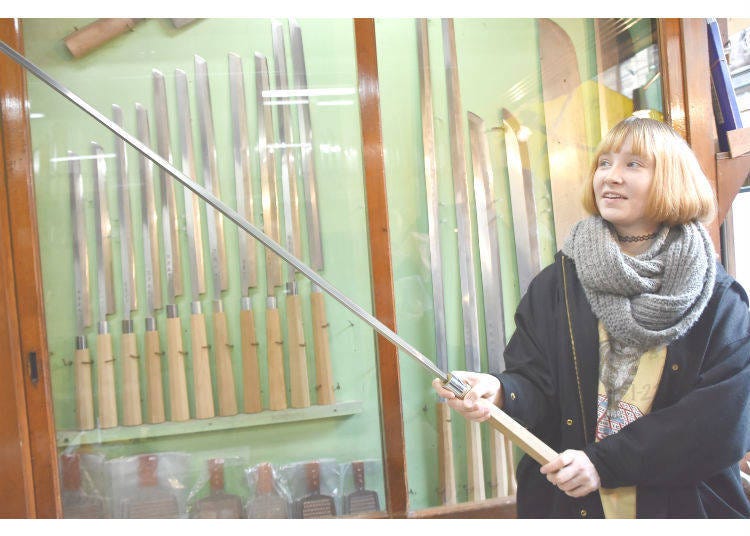
How to choose a Japanese knife?
Keeping in mind these knives can last a lifetime when maintained the right way, choosing the right knife can be challenging! Just looking at the wide variety in the shop can be overwhelming! However, there are of course always factors to think about when searching for the right knife for you.
For example, the shape and weight of the knife can determine what you should cut, how long you can continue cutting (a key factor for people who perhaps own a restaurant or cut things for long periods of time), how long the knife can last, and more.
In addition, the price of a knife can change drastically just based on how it is put together. As you can see in the picture below, the blade on the knife to the left is connected directly to the handle.
However, the knife on the right has a prominent bolster (called a tsuba) added for overall durability and weight between the blade and handle. This alone can change a lot! The type of steel used can also cause the price to vary considerably. While the knife on the left is a great knife for at-home use, the knife on the right could really make all the difference for someone who cuts for hours a day!
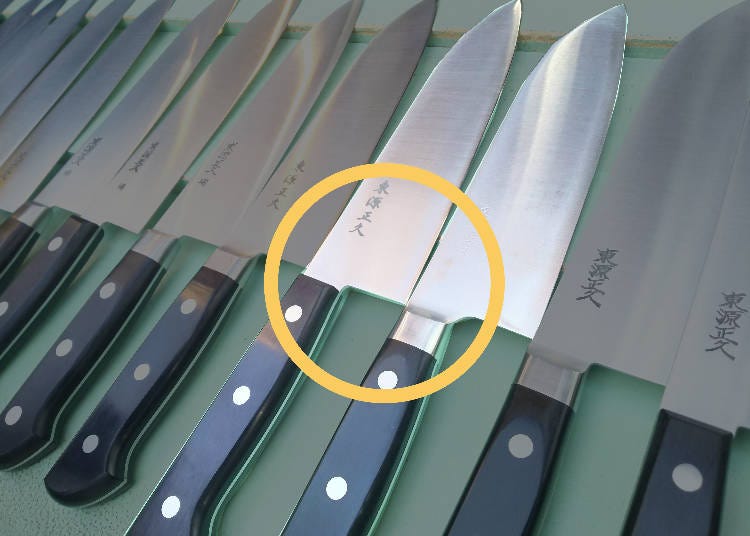
Another factor that will change the price is the material that the handle is made of. The sturdiness and general quality of the handle can determine how well the knife will perform in the long run. For example, many of the high-grade wa-bocho will use a bolster made from water buffalo horn, while a slightly lower-priced knife’s bolster is usually made from plastic.
Santoku knives are recommended for most home kitchen uses
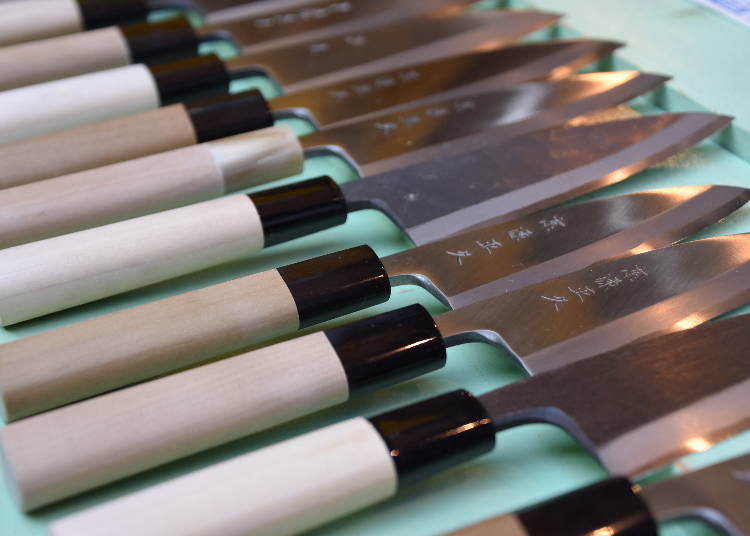
While it depends on how you intend to use it, those who want a reliable and sturdy knife at home are recommended a “santoku” knife. Meaning “three uses”, these triangular-bladed knives are intended for slicing, dicing and mincing. One type of santoku knife, known as “banno hocho” (general-use knife), is designed to cut most food items! These banno hocho are sold at a reasonable price, especially when you consider the quality and effort put into crafting them by hand!
Maintaining the quality
To preserve your knife in the best condition, Azuma Minamoto-no Masahisa recommends to always dry your knife right away after cleaning to prevent rusting and to sharpen them properly yourself.
Even though these knives are of the best quality, if not taken care of properly they are susceptible to rusting. This is why they recommend to wipe and dry your knives after you’ve finished washing them. If you are able to do this, these knives will last much longer!
Be careful though: just because these knives are all-use, Azuma Minamoto-no Masahisa’s workers strongly advise against cutting hard objects like bones which will depreciate the quality of and damage your blade quickly.
Another thing you should be sure to do is to sharpen your knife. Sharpening your knife will help to keep it in the best state possible and of course help for longer use!
The friendly staff, an amazing assortment of materials, and unparalleled craftsmanship are unarguably the key to Azuma Minamoto-no Masahisa’s success. So whether you are just curious about knives or want to purchase a quality knife for use at home or perhaps your own restaurant, this business is definitely worth the visit while in Tsukiji!
* Knife sharpening services are also available for a fee and, depending on the season, may take several days to complete.
* Note that the maguro bocho pictured above is typically for display only.
* Lectures or experiences on knife sharpening are also unavailable.
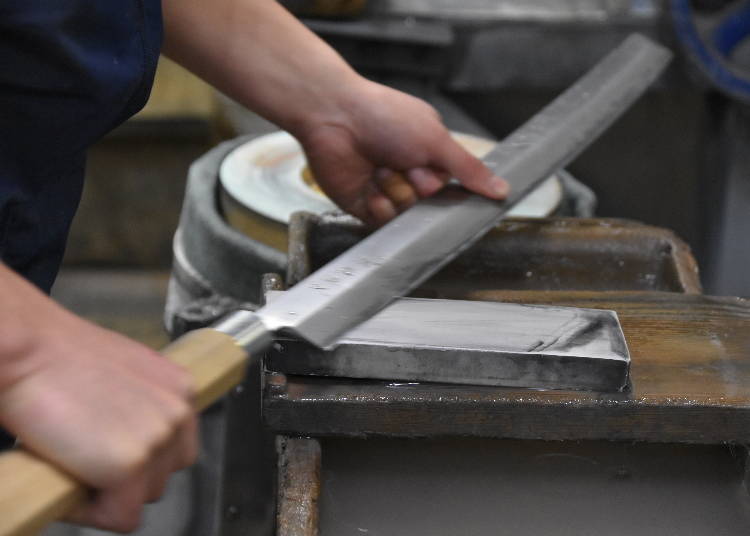
Written by Lindsey Schultz
*Prices and options mentioned are subject to change.
*Unless stated otherwise, all prices include tax.
Popular Tours & Activitiess
Recommended places for you
-
Ad

(Opening in Jan 2026) 'THE SUMO LIVE RESTAURANT HIRAKUZA GINZA TOKYO!' 5 Exciting Ways to Experience the World of Sumo!
-
Ad

Discover the "Miraculous Forest" in the Heart of Tokyo: The Institute for Nature Study (9 Minutes from JR Meguro Station)
-

New in Ginza! Air BicCamera Ginza Opens with a Faster, More Convenient Shopping Experience
by: Guest Contributor
-

Strawberries, Style, and Tokyo’s Coolest Neighborhood: Winter Afternoon Tea in Kichijoji
by: Guest Contributor
-

Jujutsu Kaisen Takes Over JR East With a Wrapped Shinkansen This Winter
by: Guest Contributor
-

First Japan Cherry Blossom 2026 Forecast Announced! Here's When & Where to See Sakura in Japan
Inspiration for Accommodations
-

Enjoy Mt. Fuji from the Comfort of Your Room! Recommended Ryokan with Mt. Fuji View
-

Stay Near the Cherry Blossoms! Hotels for Cherry Blossom Viewing in Tokyo
-

Family-Friendly Hotels with Free Shuttle to Disneyland: Convenient Access for a Magical Stay
-

Top Ranked Hakone Hotels with Mt. Fuji View: Enjoy Stunning Scenery from Your Private Space
-

Convenient Tokyo Hotels with Airport Shuttle: Ideal for Families and Heavy Luggage
-

Stunning Tokyo Tower View Hotels: Enjoy Spectacular Scenery from Your Private Space
-

Convenient Asakusa Hotels with Kitchens: Ideal for Extended Family Visits
-

Experience Luxury: Hakone's 10 Best Five-Star Accommodations
-

Enjoy Mt. Fuji Autumn Leaves! Top Hotels Near the Popular Autumn Leaves Corridor
-

Experience Hakone Fall Foliage from Your Room with Stunning Views
-

Exploring the World's Largest MUJI Store!
by: Teni Wada
-

Dive Into Tokyo's Nightlife: Ginza & Tsukiji After 9 p.m.
-

Tokyo Roppongi: 5 Most Amazing Spots at Roppongi Hills and How to Make the Best of Them!
-

Taking on Tyffonium Shibuya – Shibuya’s Latest VR Hot Spot!
-

Dining in Tokyo: 4 Late-night Dinner Spots in Asakusa!
by: David McElhinney
-

Tokyo Station Top 10 Sweets Ranking!
- #best ramen tokyo
- #what to buy in ameyoko
- #what to bring to japan
- #new years in tokyo
- #best izakaya shinjuku
- #things to do tokyo
- #japanese nail trends
- #what to do in odaiba
- #onsen tattoo friendly tokyo
- #daiso
- #best sushi ginza
- #japanese convenience store snacks
- #best yakiniku shibuya
- #japanese fashion culture
- #best japanese soft drinks




















